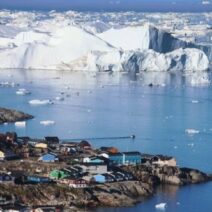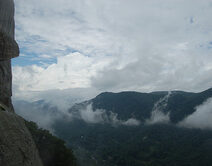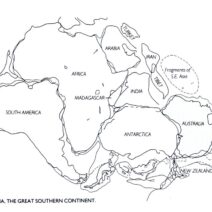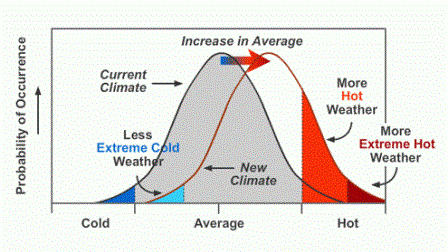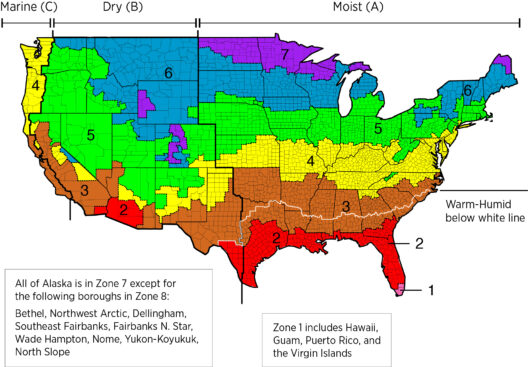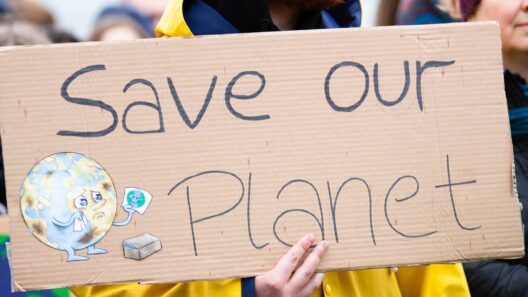In recent years, the concept of “Weather Whiplash” has emerged as a critical point of discussion among climatologists and environmentalists alike. This term encapsulates the erratic transitions between extreme weather events, such as intense droughts followed by torrential downpours or scorching heatwaves immediately succeeded by unseasonably cold snaps. As global warming continues to reshape our planet’s climate system, understanding these phenomena becomes imperative. In essence, the intricate dance between rising temperatures and the atmospheric conditions that facilitate weather whiplash illustrates a paradigm shift in how we comprehend climate patterns.
To comprehend weather whiplash, one must first recognize the underlying mechanisms that contribute to its occurrence. Climate change, primarily driven by the accumulation of greenhouse gases in the atmosphere, catalyzes an alteration in the typical behavior of weather systems. As global temperatures rise, the capacity of the atmosphere to retain moisture increases. Consequently, this leads to a greater frequency and intensity of precipitation events. Simultaneously, regions experiencing prolonged droughts may find themselves vulnerable to sudden and extreme rainfalls that the parched ground can hardly absorb, resulting in flooding and erosion.
One of the most compelling aspects of weather whiplash is its unpredictable nature. Unlike the linear progression of seasons that has characterized much of Earth’s history, the patterns driven by climate change exhibit a disjointed and anomalous quality. For instance, earlier predictions of seasonal weather become increasingly unreliable, leaving agricultural communities grappling with the uncertainties. Farmers, whose livelihoods depend on the rhythmic reliability of seasons, are now subjected to climatic capriciousness, which can devastate crops and threaten food security.
Moreover, the emotional toll of weather whiplash cannot be understated. Disparities in weather patterns affect mental health, particularly in rural areas heavily reliant on agriculture. Communities face psychological distress as they are compelled to adapt to increasingly volatile conditions. This socio-psychological divide further exacerbates the challenges posed by climate change, creating a landscape of anxiety punctuated by the stark unpredictability of the weather.
The ramifications of extreme weather events extend far beyond agriculture. Urban areas, often ill-equipped to handle sudden surges of rain, face infrastructural challenges, resulting in stormwater management systems that are unable to cope. The aftermath of such events can lead to swept-away homes, damaged property, and disrupted transportation networks. Consequently, cities find themselves in a precarious position—striving to adapt and build resilience against a backdrop of increasingly capricious weather patterns.
Climate scientists suggest that the impacts of weather whiplash will become more pronounced in the coming decades. Regions that have historically enjoyed temperate climates are now poised to experience erratic weather variations that redefine their ecosystems. For example, the frequency of arctic air masses spilling into lower latitudes has increased, creating scenarios where bitter cold spells can occur even amid uncharacteristic warmth. Such volatility undermines the natural rhythms that have defined ecosystems for millennia.
This volatility also poses a significant threat to biodiversity. Species that depend on specific climatic conditions may find themselves outpaced by the rapid changes induced by climate change. Disruption of migration patterns, breeding seasons, and food availability could lead to population declines amongst sensitive species. The delicate balance of ecosystems is at risk, as flora and fauna struggle to adapt to environments that are in constant flux.
Mitigation strategies are imperative as societies seek to address the consequences of weather whiplash. Transitioning to renewable energy sources and ensuring responsible land-use practices can curtail greenhouse gas emissions. Urban planners must prioritize the construction of resilient infrastructure designed to absorb, redirect, or otherwise manage the effects of extreme weather events. Policies that reinforce sustainable agricultural practices will provide farmers with the tools they need to withstand climatic uncertainty.
Public awareness is crucial in fostering a culture of resilience against the specter of climate change. Communities need comprehensive education around the concepts of climate variability and the importance of sustainable practices. Empowering citizens with knowledge can galvanize collective action towards reducing carbon footprints and implementing adaptive measures in their daily lives.
In the global context, addressing weather whiplash requires an international effort. Climate change knows no borders, necessitating cooperative strategies that span nations. Global agreements aimed at reducing emissions and funding climate adaptation initiatives in vulnerable regions would serve to strengthen collective resilience. By embracing collaborative measures, countries can pool resources, share knowledge, and create a unified front against the challenges posed by a rapidly changing climate.
As one examines the dynamism introduced by climate change, the concept of weather whiplash transcends mere reporting of extreme phenomena. It serves as a clarion call for action—a reminder that the fabric of our planet’s climate is woven intricately with our actions and choices. The need for urgency in addressing climate change is clearer than ever. In understanding the shifting paradigms of weather patterns, one can cultivate a newfound appreciation for climate science and the profound effects it has on our daily lives.
Ultimately, the dialogue surrounding weather whiplash is not merely a scientific exploration but a narrative that touches every aspect of human existence. It beckons a transformation in perspective—an invitation to perceive the interconnectedness of our actions and the environment. By fostering curiosity about these climatic shifts and understanding their implications, individuals can play a pivotal role in redefining our relationship with the planet.
